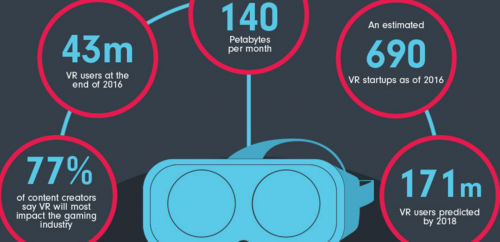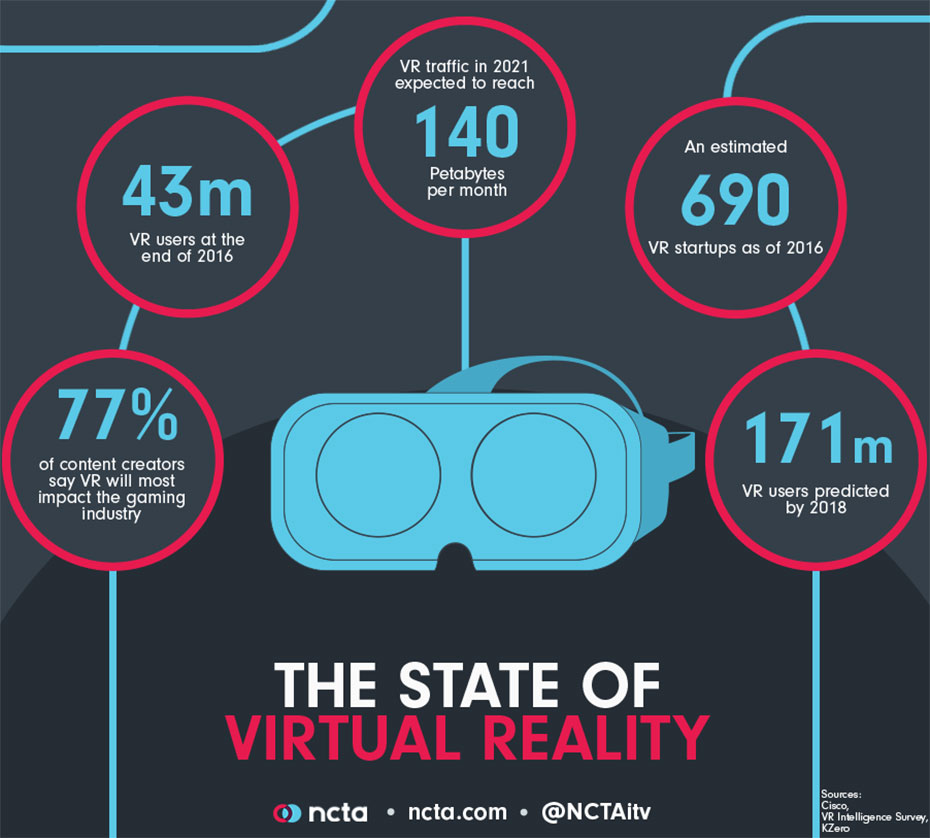In the latest installment of our State of the Industry series, we explore the rise of virtual reality and its predicted growth worldwide as a medium that will touch many aspects of our lives in the next several years, particularly in the media and entertainment landscape. Similar to the advancements we’ve seen in internet speeds, premium television, TV Everywhere and online gaming, VR has progressed immeasurably in the past decade.
In addition to the gaming space, where VR makes it biggest impact, VR is making strides in television as audiences are introduced to new apps and hardware that make it easy for them to tune in. Just recently, sports fans enjoyed watching their favorite college basketball teams in VR as Turner brought March Madness in a whole new way to those who wished to watch the games courtside. And last summer, NBC Universal captivated audiences with its VR coverage of the Rio Olympic Games with over 85 hours of programming, allowing people to experience the excitement and competition in Brazil, sans the travel. More TV programmers are experimenting with and unleashing VR content than ever before, including Discovery, National Geographic, and CNN, to name a few, and the list is just going to get longer.
As we’ve written about previously, the VR of today brings users better immersive experiences, and it’s due to the improvements and enhancements that technology, internet and content innovators have been working on to correct motion sickness, to lower hardware costs, to bring connectivity up to speed, and to create the up, close and personal experiences that audiences crave.
Notably, the Cisco Visual Networking Index has forecasted a large spike in VR internet traffic within a five year span, with predictions climbing from 13.3 petabytes per month in 2016 to 140 petabytes per month in 2021. [As background, one petabyte equals one million gigabytes, or as some in the computer community like to say, the equivalent of the DNA of the entire population of the United States, cloned twice.] As internet speeds and connectivity get faster and stronger and technology enhancements make VR all the more accessible, the diverse VR offerings that TV content creators, gaming and technology innovators will bring to the mainstream are bound to increase and multiply in the years to come.

